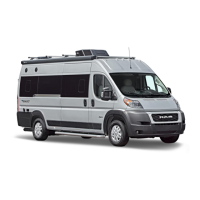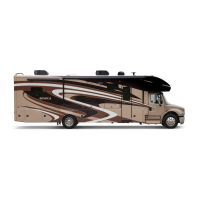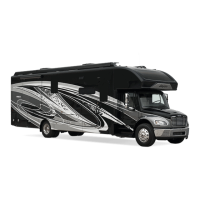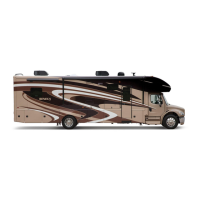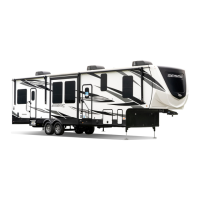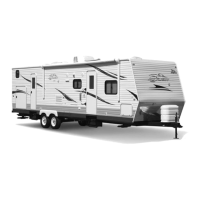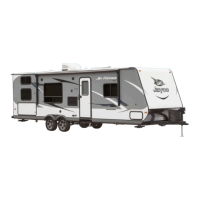25
Loading Your Motor Home
Store and secure all loose items inside the motor home before traveling. Overlooked items
can become dangerous projectiles during a sudden stop.
Distribute cargo side-to-side so the weight on each tire does not exceed one-half of the
GAWR for either axle. Make sure any tie down straps (if so equipped) on appliances or
furniture are secure. Load heavy objects on the oor, or as low as possible.
Consult a hitch specialist or your dealer for assistance when pre-
paring your motorhome for towing a vehicle or trailer.
provides informa-
tion on the tire sizes, cold tire ination pres-
sures, the VIN and maximum cargo capacity.
The maximum cargo capacity listed on the la-
bel does not include the weight of a full load
of water.
This label means a roof on a vehicle has been modied in whole or in part.
.
This means you should weigh
your vehicle as loaded for your normal travel to determine the actual
weight. If you exceed the GVWR, you remove items from the
motor home, or drain liquids, then re-weigh the vehicle to ensure you
have achieved a safe weight.
The actual weight of the vehicle, passengers, all options, liquids, the
hitch weight of your towed vehicle and your personal cargo is important
for you to know so you do not exceed the Gross Vehicle Weight Rating
(GVWR) of the motorhome. The volume of space available for storage
may exceed the amount of available cargo capacity. Large storage com-
partments have been designed to accommodate normal camping items,
which are bulky, but not necessarily heavy.
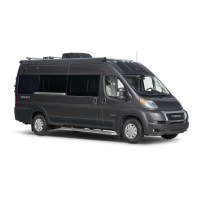
